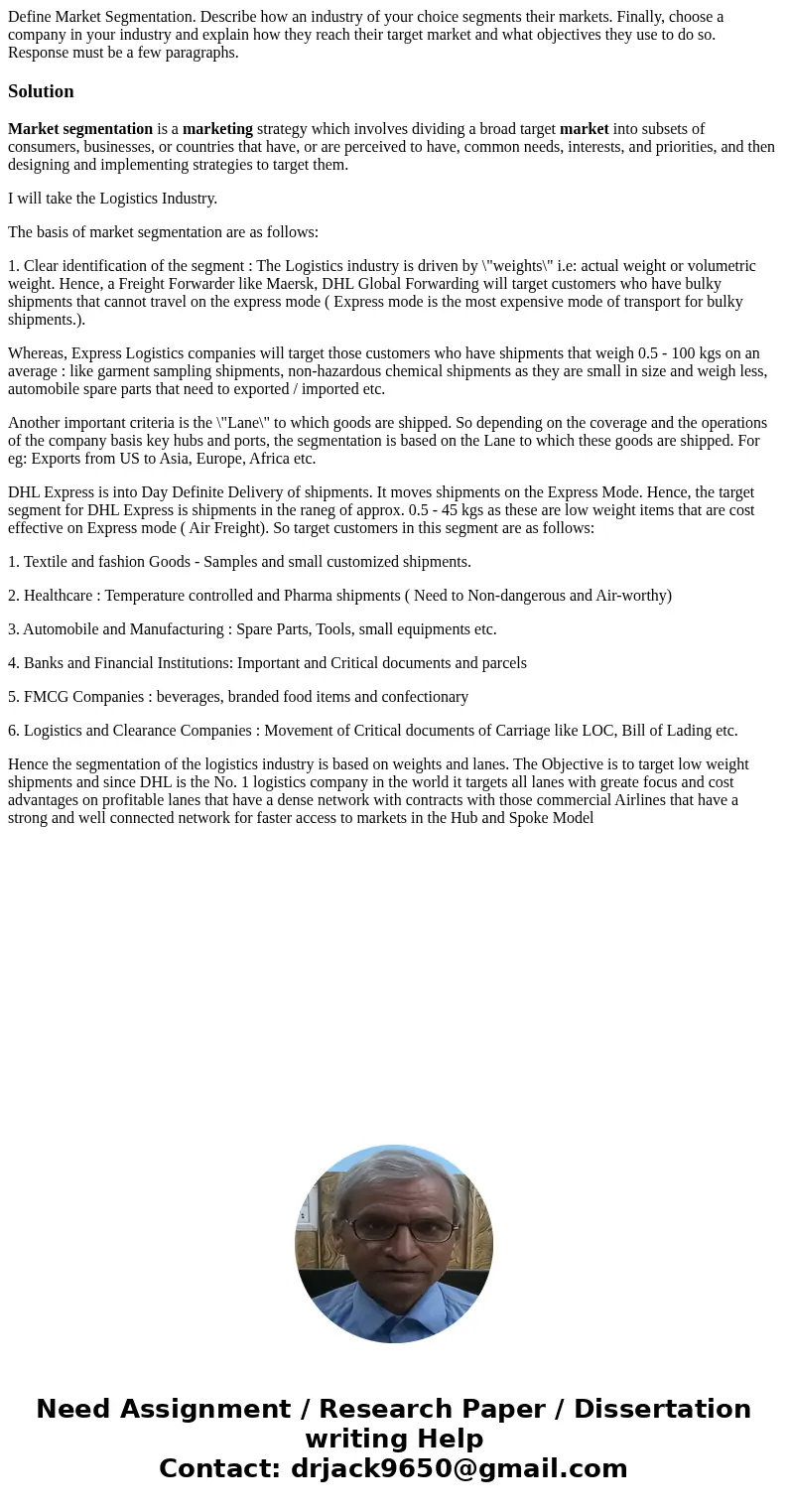Define Market Segmentation Describe how an industry of your
Define Market Segmentation. Describe how an industry of your choice segments their markets. Finally, choose a company in your industry and explain how they reach their target market and what objectives they use to do so. Response must be a few paragraphs.
Solution
Market segmentation is a marketing strategy which involves dividing a broad target market into subsets of consumers, businesses, or countries that have, or are perceived to have, common needs, interests, and priorities, and then designing and implementing strategies to target them.
I will take the Logistics Industry.
The basis of market segmentation are as follows:
1. Clear identification of the segment : The Logistics industry is driven by \"weights\" i.e: actual weight or volumetric weight. Hence, a Freight Forwarder like Maersk, DHL Global Forwarding will target customers who have bulky shipments that cannot travel on the express mode ( Express mode is the most expensive mode of transport for bulky shipments.).
Whereas, Express Logistics companies will target those customers who have shipments that weigh 0.5 - 100 kgs on an average : like garment sampling shipments, non-hazardous chemical shipments as they are small in size and weigh less, automobile spare parts that need to exported / imported etc.
Another important criteria is the \"Lane\" to which goods are shipped. So depending on the coverage and the operations of the company basis key hubs and ports, the segmentation is based on the Lane to which these goods are shipped. For eg: Exports from US to Asia, Europe, Africa etc.
DHL Express is into Day Definite Delivery of shipments. It moves shipments on the Express Mode. Hence, the target segment for DHL Express is shipments in the raneg of approx. 0.5 - 45 kgs as these are low weight items that are cost effective on Express mode ( Air Freight). So target customers in this segment are as follows:
1. Textile and fashion Goods - Samples and small customized shipments.
2. Healthcare : Temperature controlled and Pharma shipments ( Need to Non-dangerous and Air-worthy)
3. Automobile and Manufacturing : Spare Parts, Tools, small equipments etc.
4. Banks and Financial Institutions: Important and Critical documents and parcels
5. FMCG Companies : beverages, branded food items and confectionary
6. Logistics and Clearance Companies : Movement of Critical documents of Carriage like LOC, Bill of Lading etc.
Hence the segmentation of the logistics industry is based on weights and lanes. The Objective is to target low weight shipments and since DHL is the No. 1 logistics company in the world it targets all lanes with greate focus and cost advantages on profitable lanes that have a dense network with contracts with those commercial Airlines that have a strong and well connected network for faster access to markets in the Hub and Spoke Model

 Homework Sourse
Homework Sourse